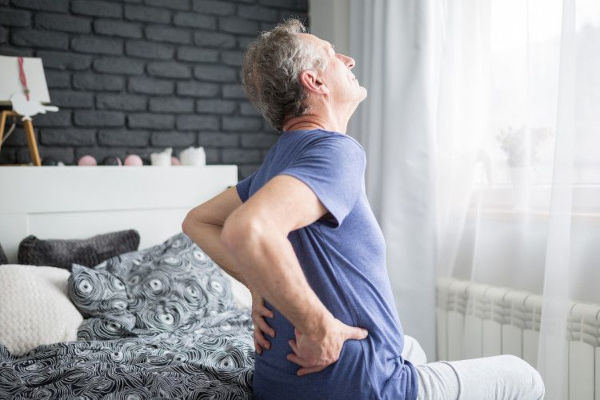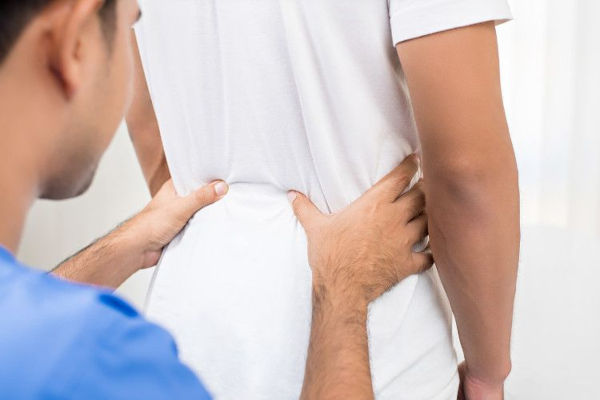Effective Spinal Stenosis Treatment in Algonquin
Our Treatments Improve Your Spinal Stenosis Within the First Month!
Have you been feeling tingling or weakness in your back and limbs for a while now? If the symptoms seem to be worsening over time, you may have spinal stenosis. This progressive illness occurs when the spaces in your spine narrow over time. This narrowing of the spine can bring more than discomfort – it can also affect your ability to walk. That’s why seeking effective spinal stenosis treatment for your condition is crucial.
At Algonquin Chiropractic Center, we identify the underlying causes of spinal stenosis and create an effective, custom treatment plan for you. Find lasting relief from your spinal stenosis symptoms without risky surgeries or potentially addictive medications!

Identify the Exact Causes of Your Spinal Stenosis
Doctors sometimes jump straight to spinal stenosis treatment without identifying the root causes of the condition. Addictive medications are often prescribed as a first choice of treatment, but these only mask the pain – they do nothing to treat the underlying issue.
You’d think that finding the exact causes of spinal stenosis would be a crucial first step to all forms of treatment, but it’s just not the case. There are many possible causes of spinal stenosis, including bone spurs, thickened ligaments and herniated discs.
During our initial assessments, we can identify what’s causing your stenosis and develop a personalized plan for your road to recovery. Our safe, holistic treatment options won’t just mask your pain but help your body heal for lasting relief from all your disruptive symptoms.
Depending on the identified cause, your spinal stenosis treatment plan may include a combination of:
- Spinal bracing
- Orthotics
- Vibrating therapy
- Laser therapy
- Rehabilitation
- The Cox Technic
- And more
Looking To Schedule Your First Chiropractic Visit?
Whether you are experiencing low back pain, tingling in the feet or regular headaches, Dr. Galante can help you find relief!
Find the Ideal Spinal Stenosis Treatment for Your Situation
The best spinal stenosis treatment plan will depend on various factors. Dr. Galante recognizes that no two cases are exactly the same, so he uses the following steps to provide a custom treatment plan designed for your unique needs:
1. Initial Consultation
Dr. Galante will sit down with you to discuss the nature of your pain and other symptoms. He’ll also review your medical history to get a complete picture of your health.
2. Comprehensive Testing
Next, you’ll undergo non-invasive chiropractic, orthopedic and neurological testing to get to the root of your issue. Imaging like X-rays or MRIs may be done in some cases.
3. Spinal Stenosis Treatment
Based on his findings, Dr. Galante will create a customized spinal stenosis treatment plan if he believes he can help. If not, he’ll refer you to a trusted physician who can.
Enjoy Peace of Mind with Proven Techniques
At Algonquin Chiropractic, the numbers don’t lie. The treatments we use have statistics to prove their effectiveness. For example, using the Cox Technic, our patients usually experience a 25-50% improvement in symptoms in the first 2-4 weeks of care.
Studies have also shown that spinal stenosis patients have significantly lower pain scores after chiropractic care than after physical therapy. And overall, studies show a 91% success rate.

Avoid Potentially Addictive Pain Killers
We pride ourselves on a medication-free approach to spinal stenosis treatment. After all, the recent opioid epidemic proves that painkillers should always be tried as an absolute last resort. Instead, come to Algonquin Chiropractic, where we can reduce your pain without putting you at risk of addiction.
Experience a More Effective Approach than Risky Surgery
You may be under the impression that surgery is inevitable, but this simply isn’t true. Our treatments can progressively heal your condition over time so that surgery becomes less and less necessary. Plus, chiropractic care has fewer risks of complications than surgery, making it the best choice for your well-being.
Get Natural Spinal Stenosis Treatment Today
Spinal stenosis may be your present, but it doesn’t have to be your future. Give us a call today to start your journey to a pain-free lifestyle!




